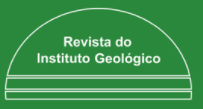Guaraní Aquifer System (GAS) vulnerability evaluation within the Tacuarembó Municipality surroundings, Uruguay: Application of the GOD and DRASTIC methods
DOI:
https://doi.org/10.69469/derb.v45.820Keywords:
Vulnerability, Guaraní Aquifer System, Hydrogeology, UruguayAbstract
The sustainability of the water resources is of utmost importance, whether surface or groundwater. This work addresses the protection of the Guaraní Aquifer in the Tacuarembó municipality, capital of the homonymous department in Uruguay. Evaluating the intrinsic vulnerability and the risk of contamination of the aquifer provided the necessary knowledge to plan its use. It should also be considered in the territorial planning plans in that city to manage the resources better. GOD and DRASTIC methods were applied to determine vulnerability. The application of these methods showed differences in vulnerability determinations since the first takes fewer parameters for its evaluation than those considered by the second. However, applying one or the other depends mainly on the data and information available in the area under study. It was observed that the GOD method is more restrictive than DRASTIC: in the first, it considers that 24.3% of the area has a high vulnerability, while DRASTIC considers it 16.8%; in the case of moderate GOD classifies 56.2% as such, while DRASTIC classifies it at 76.3%. Regarding the area occupied by the low vulnerability of the area, DRASTIC is somewhat less restricted than GOD since the former covers an area 6.8% larger, while GOD restricts it to 19.6%.
Downloads
Downloads
Published
How to Cite
Issue
Section
License
Copyright (c) 2024 Roberto Carrión, Didier Gastmans , Gerardo Veroslavsky

This work is licensed under a Creative Commons Attribution 4.0 International License.
Política de Acesso Livre:
A revista Derbyana oferece acesso livre ao seu conteúdo. Toda a coleção da Revista é disponibilizada de forma gratuita em https://revistaig.emnuvens.com.br/derbyana e no Portal de Periódicos Eletrônicos em Geociências – PPeGeo (http://ppegeo.igc.usp.br), resultado de parceria entre a Sociedade Brasileira de Geologia e o Serviço de Biblioteca e Documentação do Instituto de Geociências da Universidade de São Paulo.




















